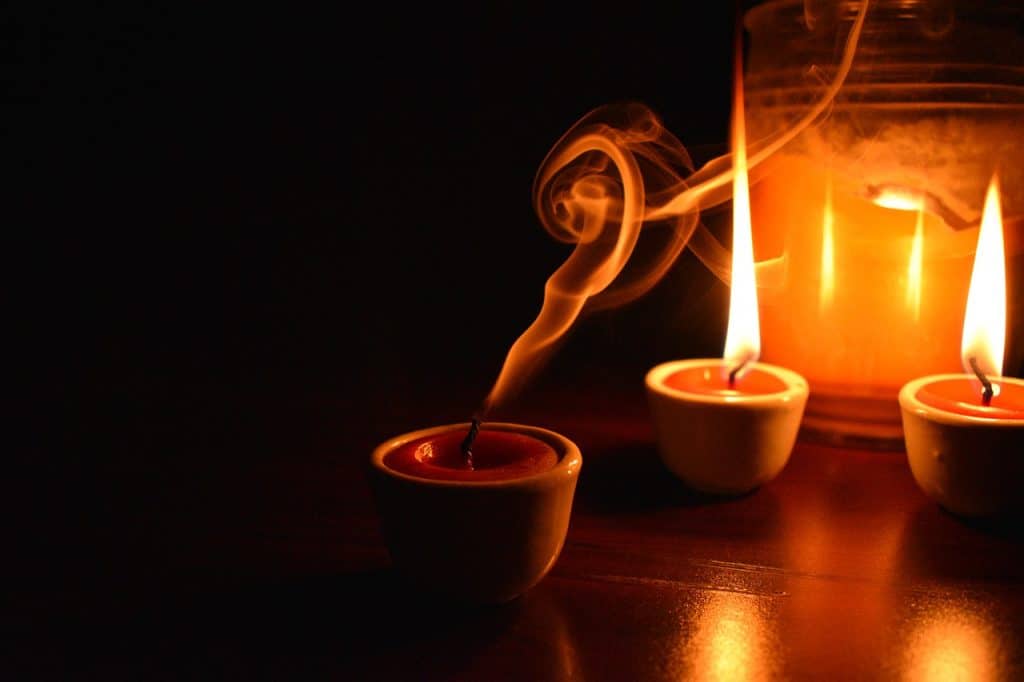Soy candles are made from soy wax and the wax is obtained from the hydrogenation of soybean oil. Typically, soy wax has lower melting points compared to other kinds of wax used in making candles and are used mainly for making container candles. Soy wax has a lower scent throw than paraffin wax.
Soy wax is renewable and burns cleanly. It burns smoke and soot free, and lasts longer than many other waxes. Soy candles naturally have some characteristics that may not look so good; sometimes the inconsistencies occur during production while at other times it occurs as a result of nature taking its course. Some of the not-good-looking characteristics of soy candles include:
- Yellow discoloration: soy waxes are generally mixed with fragrance oil at 85Oc and stirred for about 2 minutes to make the fragrance well incorporated, when these conditions are not met, chances are that the fragrance oil may separate from the wax, and when this occurs the separated fragrance oil would be seen as yellow sediments at the bottom of the candle’s container. This is a sometimes noticed in soy candles and it is not very pleasant to the eyes.
- Lumpy tops: some soy candles over time develop lumps on the top of the wax, these lumps occur when pour temperature is not reached during mixing of wax and fragrance. Many floral fragrances are notorious for curdling the top of soy candles and making them lumpy.
- Wet spots: in some soy candles in glasses you notice bubbles of air or water, this happens because the wax has pulled away from the glass. This is in no way has negative effect on how well the candle burn but it is not too good for the looks of the candle. It happens due to fluctuation in the storage temperature of the candle.
- Hollowing: Hollowing is another phenomenon that occurs as a result of low pouring temperature. It is noticed as a hollow cavity in the top center of the candle. It is caused by drying of the top of the candle when the bottom is still warm; the wax sucks down on itself from the bottom. To remedy this, pour temperature should be increased gradually and after that cooling should be allowed to proceed gradually. Another way to avoid hollowing is by considering the environment in which you make candles- candles should be made in an environment with stable room temperature.
- Frosting: frosting is a natural occurrence in almost all vegetable wax, it is a re-crystallization process. Frosting is an indication of the purity of the wax. A frosting soy candle is most likely made from 100% soy wax, although some chandlers may introduce some additives to 100% soy wax to prevent frosting in the candles (soy waxes like Cargill NatureWax C-3 soy wax, Cargill NatureWax C-6 soy wax, Golden Brands 444 soy wax (AAK), Golden Brands 464 soy wax (AAK) do not frost due to the presence of additives). Frosting is more evident in colored candles as the color of the frost is almost similar to the natural color of the soy wax. This phenomenon does not affect the scent throw or other burning characteristics of a soy candle. A frosting candle may not be at its best look, but frosting generally does not affect the performance of the candle.
Reasons why your soy candle looks frosty
Some people assume frosting of soy candle is an indication of it drying out but it is not, it is a natural phenomenon unique to candles made from pure vegetable waxes especially soy wax and palm wax- in fact, you should be concerned if your soy candle does not frost except stated expressly that additives have been added to prevent it from frosting. Stopping a pure soy candle from frosting is almost impossible but it can be minimized.

How to minimize frosting
- By curing at stable temperature: Frosting is caused mainly by drastic change in temperature, so curing of soy candles should be done in an environment with stable temperature to at least minimize frosting.
- Choose your ingredients carefully: apart from the soy wax, the other ingredients used in making soy candles may affect frosting. So take note of the fragrance oil, containers and dyes you are using for production and take note of the reaction over time, stick to the process that least supports frosting.
- Keep your candles away from sunlight and florescent lighting: heat from sunlight and florescent light may affect frosting so to minimize frosting, keep your soy candles away from these harsh lights.
- Use your candles as soon as possible: Frosting occurs with aging of the soy wax, so it is best you use your soy candles within the first 6 month of production to get minimal frosting.
- Try using soy candles of plain color: Frosting is most evident in colored candles since the color of the frost is almost equal to the natural color of the soy wax. So, to mask frosting it is best you leave the candle the natural color.
- Modify the soy wax used for making soy candles: Blend your soy wax with paraffin wax to make it more stable or you may mix it with coconut oil or a UV inhibitor.
- Remove the soy wax frosting temporarily with a heat gun: already formed frostings may be removed with a heat gun but sometime, the frost will continue to grow. Frosting can be removed with a heat gun following the steps below:
- Heat the area with the frosting mildly
- Melt the topmost layer of the soy candle to release trapped air bubble and then heat the entire candle (you may dip the container in hot water to heat) consistently and allow cooling to proceed evenly. This would slow down further frosting.
Read what causes the white marks on my soy candle for more information.
Conclusion
In reality frosting is kind of a blessing as it is one of the ways to ascertain the purity of a soy candle, although some people do not like the presence of frost mainly due to aesthetic reasons so it is best you learn how to minimize its occurrence since it can’t be stopped. But, the presence of frosts in your soy candles is never an indication of it being dry.




